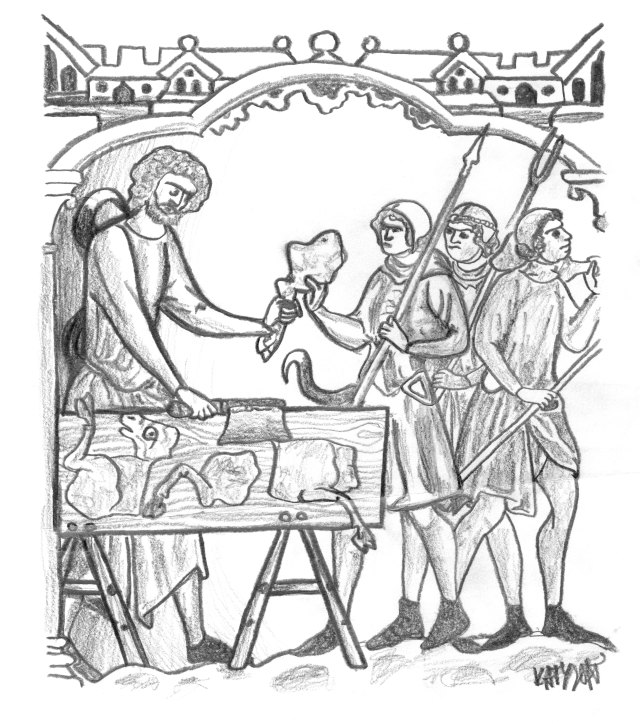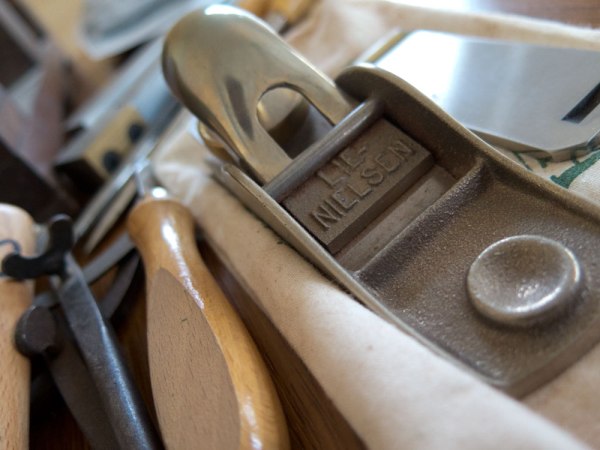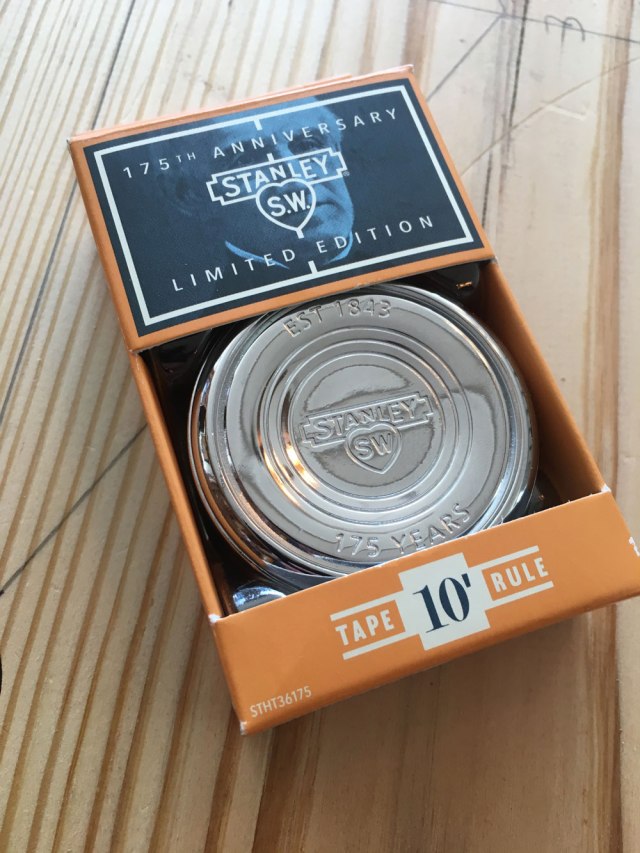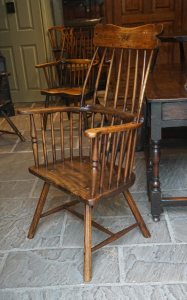Coming in 2018: The Lost Art Press Work Jacket –
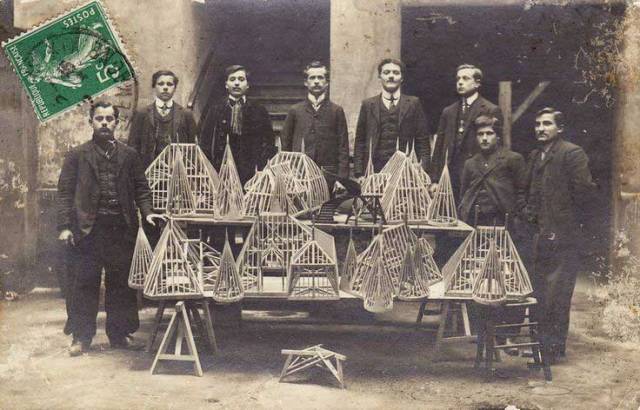
I have two favorite garments: a beat-up motorcycle jacket for winter and a traditional French work jacket for the other three seasons.
The work jacket, sometimes called a bleu de travail, was popular in the late 19th century and the early 20th century among the French working classes – especially farmers, masons and woodworkers.
The jackets are simple, unlined and incredibly durable. They typically feature four roomy pockets – three on the outside and a fourth on the inside that usually is embroidered with the maker’s name. The only other evidence of the pedigree of the garment is usually found engraved on the buttons.
I wear mine in the shop and when working on our building. The pockets are great for holding tools and the jacket is designed to accommodate a wide range of motion. I can saw and plane in this jacket, and it moves nicely with me. In fact, many times I simply forget I’m wearing it. The more it gets beat up, the better it looks.
It’s also just nice enough to wear out to dinner (once I dust it off).
Most of the French work jackets you’ll find for sale are blue, which was the preferred color of farmers and all-purpose laborers. Management wore a similar jacket in a light grey or white. But French (and German) woodworkers definitely preferred black.
For many years I’ve wanted Lost Art Press to produce a work jacket that was faithful to the originals in every way, including the cotton moleskin cloth, the distinct stitching, the engraved buttons and even the embroidered inside pocket. And, because I’m a woodworker, I wanted to offer it in black.
So we’ve teamed up with designer and woodworker Tom Bonamici, who is similarly obsessed with these jackets. Tom has designed a work jacket based on a vintage one he owns. And last week, the factory (here in the United States, of course) produced the first successful prototype.
We are very excited.
In the coming weeks, Tom is going to share the history of these jackets, the details of their construction and how a garment goes from a cool idea to something you want to wear every day. And, in early 2018, we will offer these for sale.
We don’t have prices or a timeline yet. But all that is coming soon.
— Christopher Schwarz
